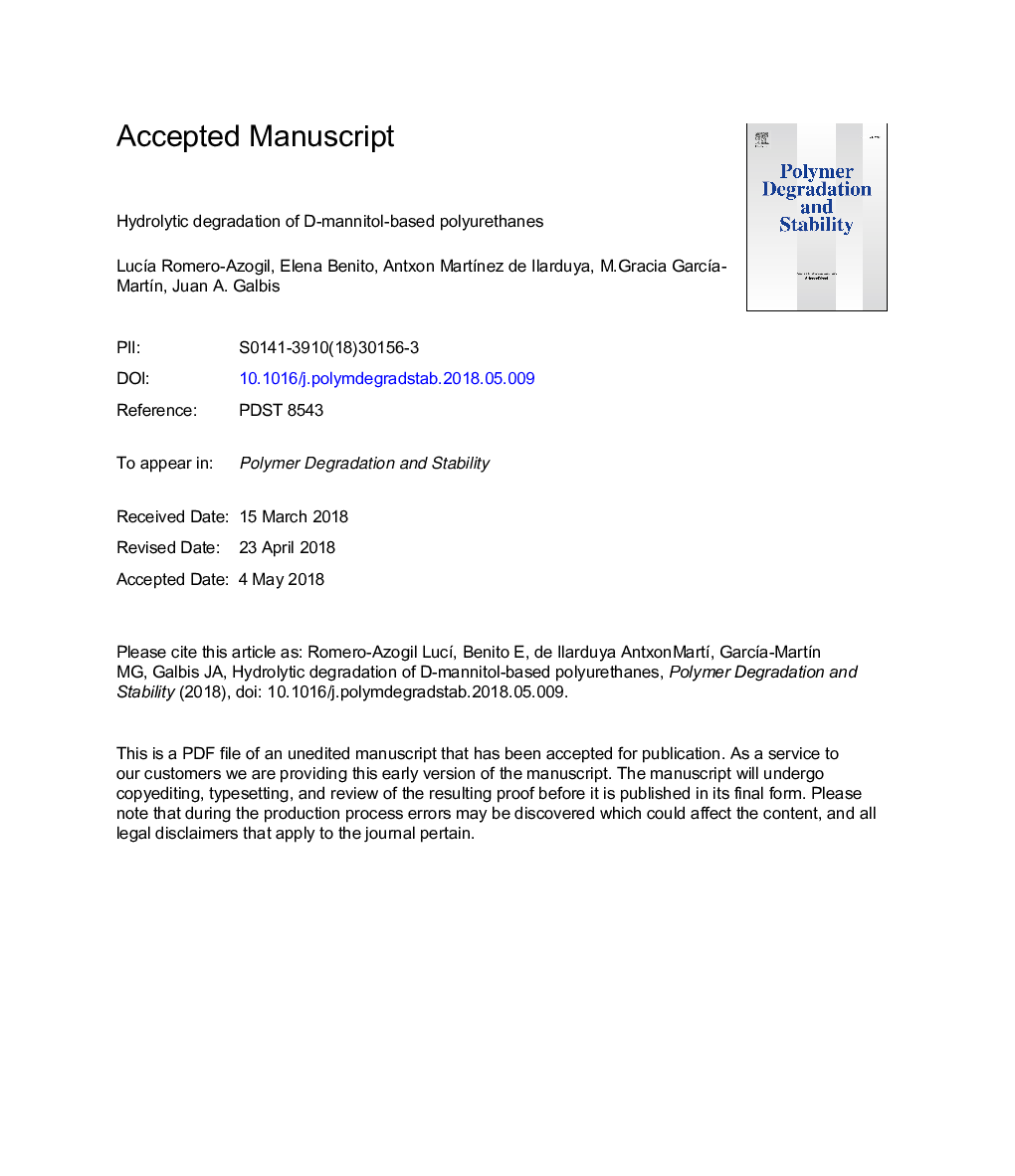| Article ID | Journal | Published Year | Pages | File Type |
|---|---|---|---|---|
| 7823999 | Polymer Degradation and Stability | 2018 | 58 Pages |
Abstract
The capacity of redox D-mannitol-based polyurethanes to modulate the glutathione response under physiological conditions, as well as their effectiveness for sustained and site-specific drug release in the gastrointestinal tract (GIT), have been demonstrated in previous studies. Based on those promising results, our attention has now been drawn towards hydrolytic degradation processes at 37â¯Â°C and different pH values, from acidic to basic conditions, as in the GIT. For that, two sets of branched and linear D-mannitol-based polyurethanes containing disulfide bonds have been synthesized, which has been possible depending on the starting D-mannitol-derived monomer. Thus 3,4-O-isopropylidene-D-mannitol, having two secondary hydroxyl groups in addition to the two primary hydroxyl groups, afforded polyurethanes with a certain degree of branching. In contrast, 2,4:3,5-di-O-isopropylidene-D-mannitol and 2,3:4,5-di-O-isopropylidene-D-mannitol, lacking secondary hydroxyl groups, led to linear polyurethanes. Removal of the O-isopropylidene protecting groups resulted in more-hydrophilic materials. As in glutathione-mediated degradation, the branched polyurethanes presented enhanced degradation under physiological conditions, proportional to the content of D-mannitol, whereas linear polyurethanes were degraded slowly, and pH 8 and 10 were required.
Related Topics
Physical Sciences and Engineering
Chemistry
Organic Chemistry
Authors
LucÃa Romero-Azogil, Elena Benito, Antxon MartÃnez de Ilarduya, M.Gracia GarcÃa-MartÃn, Juan A. Galbis,
